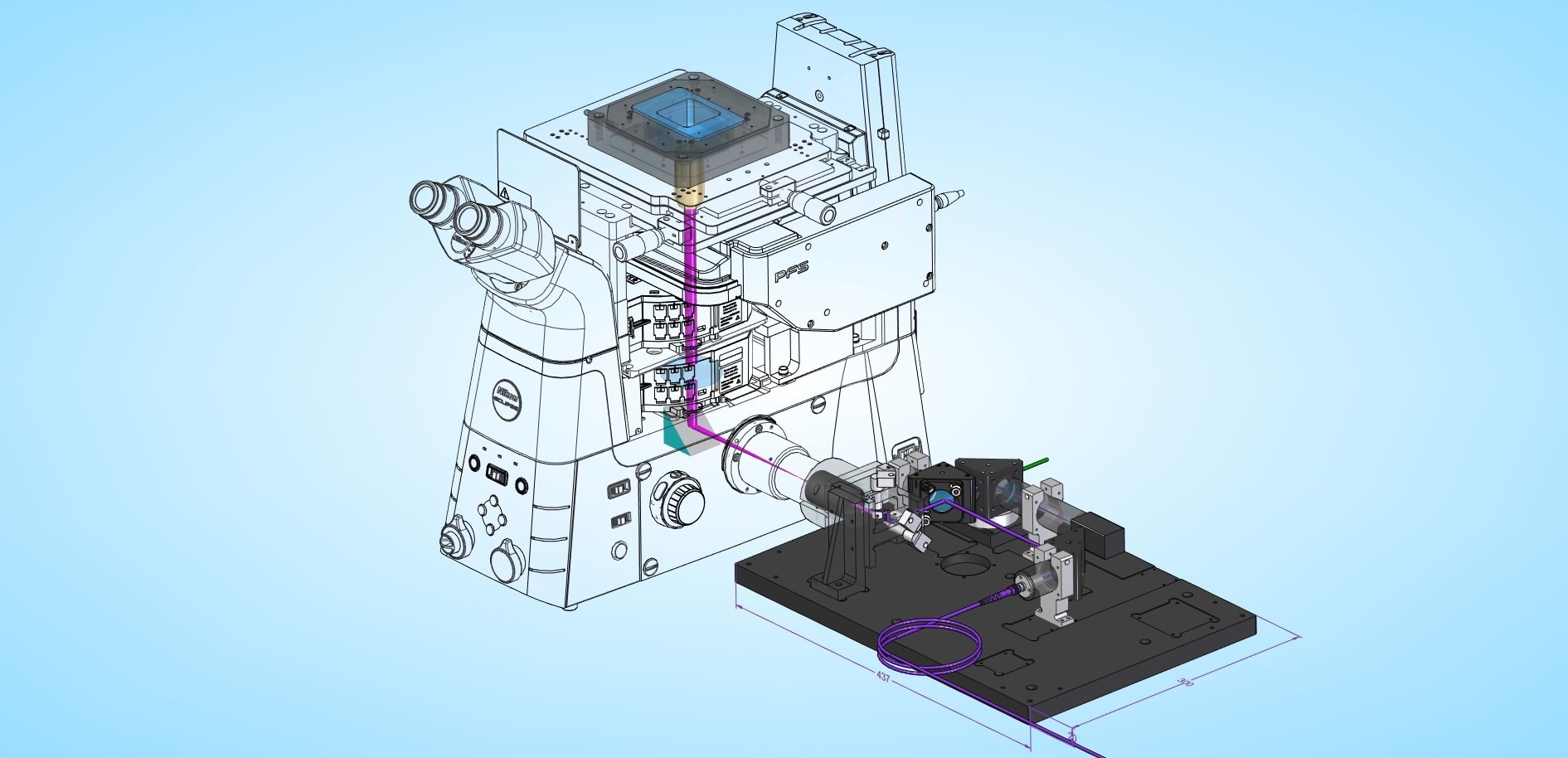Researchers have created a low-cost, easy-to-build 3D nanoprinting technology capable of producing arbitrary 3D objects with extremely minute details. The new 3D nanoprinting process is accurate enough to print metamaterials as well as optical devices and components such as microlenses, micro-optical devices, and metamaterials.

Researchers developed an easy-to-build, low-cost 3D nanoprinting system that can create arbitrary 3D structures with extremely fine features. It is compatible with most commercial microscopes. Image Credit: Cuifang Kuang, Zhejiang University
Our system uses a two-step absorption process to realize 3D printing with accuracy reaching the nanometer level, which is suitable for commercial manufacturing. It can be used for a variety of applications such as printing micro or nanostructures for studying biological cells or fabricating the specialized optical waveguides used for virtual and augmented reality devices.
Cuifang Kuang, Study Team Leader, Zhejiang University
Traditional high-resolution 3D nanoprinting methods rely on tens of thousands of dollars in pulsed femtosecond lasers. Kuang and colleagues explain their innovative technology based on an integrated fiber-coupled continuous-wave laser diode that is not only economical but also simple to operate in the Optica Publishing Group’s journal Optics Letters.
Kuang added, “This new approach helps make 3D nanoprinting accessible to scientists, even ones who are not familiar with the optical systems typically used for this type of fabrication. It could eventually lead to low-cost desktop 3D nanoprinting devices that could offer precision nanoprinting to anyone.”
Creating a Simple Setup
Two-photon absorption is a method commonly used in 3D printing items with features as small as 100 nm. In order to solidify or polymerize a liquid resin that is light-sensitive, this necessitates utilizing expensive femtosecond lasers to accomplish precise 3D photon absorption.
Two-step absorption is a strategy that was recently created as an alternative to two-photon absorption by Vincent Hahn’s team at Karlsruhe Institute of Technology. It initiates polymerization with a unique photo initiator called benzil and a single light source. In their latest study, the researchers created a two-step absorption system for 3D nanoprinting that is easier to use and quicker. It makes use of an integrated fiber-coupled laser with a wavelength of 405 nm.
The new technology collimates the laser beam from the single-mode polarization-maintaining fiber and directs it onto galvanometric mirrors for 2D or 3D printing. Then, using a microscope objective with a high numerical aperture, it is focused on the photosensitive material.
Printing Tiny Objects
“The simple system does not need a large number of optical components to modulate the laser beam, which saves money and produces less optical aberrations, or errors. It is also highly stable and compatible with most commercial microscopes,” Kuang further stated.
The researchers print 2D line gratings and 3D woodpile nanostructures with a lateral period of 350 nm to show off their 3D nanoprinting technique. With a laser power of less than 1mW, it is still possible to build 2D gratings with sub-200-nm resolution and sub-50-nm linewidth by using a higher scan speed of 1000 microns per second.
The researchers are currently attempting to increase the technique’s writing speed and quality while preserving high resolution. As a result, the system will be useful for additional applications.
Journal Reference
Liu, X., et al. (2023) High-resolution 3D nanoprinting based on two-step absorption via an integrated fiber-coupled laser diode. Optics Letters. doi:10.1364/OL.495286
Source: https://www.optica.org/